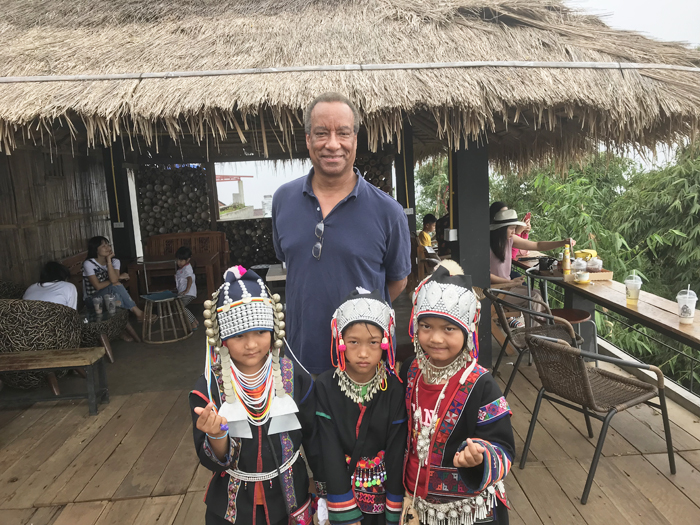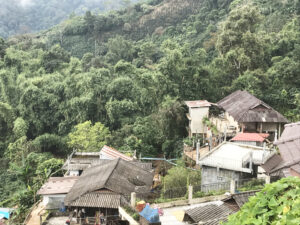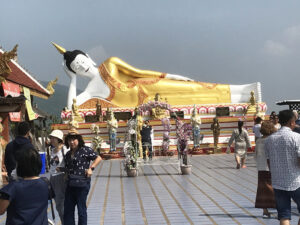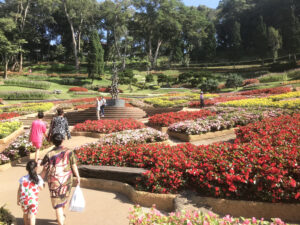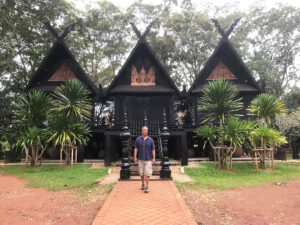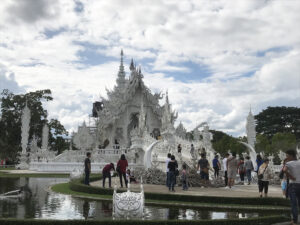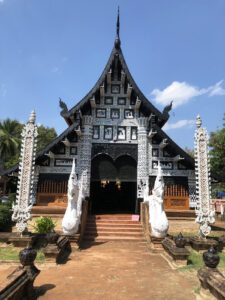 By Fletcher Word
By Fletcher Word
The Truth Editor
Everyone who visits Thailand starts in Bangkok, the nation’s capital city which is located in the southern part of the country. From Bangkok, visitors can easily reach nearby cities such as Ayutthaya, Pattaya, Rayong, Hua Hin and the far southern reach areas such as Phuket.
However, the northern part of the country is equally as fascinating and often overlooked – so why not head north by plane to Chiang Mai, Thailand’s second largest city and the capital of its northernmost province.
Set amidst a stunning backdrop of mountain ranges, Chiang Mai is visually impressive for its natural scenery and also for what man has wrought over the centuries.
Chiang Mai (“new city” in Thai) was founded in the late 13th century and sits in a valley on a river basin in the Thai highlands. Over the years, more than 300 Buddhist temples have been erected in the metropolitan area, including the famous 600-year-old Wat Chedi Luang (“The temple of the Big Stupa”) at the historic center of the city, the Wat Phra Singh Temple, ornately decorated with gold, and the Tapae Gate, part of the ancient city walls that were restored in the 20th century.
Other impressive sites in and around the city include the Wat Pha Lat, a temple hidden in the forest near waterfalls, and the not-so-secret Secret Elephant Sanctuary. Don’t overlook the extensive Chiang Mai night bazaar, a night market featuring vendors and the delicious street foot that is an ever-present feature of Thailand.
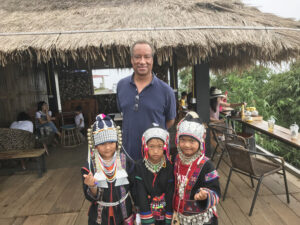
Temples, mountains, tea gardens, street food, beaches are all part of the wonders of Thailand – more beach resorts than any other country, in fact. In the north, as in much of the country, such wonders are endless. Chiang Mai is the gateway to a variety of scenic and historic areas, particularly due north of the city.
Chiang Rai (city of the “Rai” named for a 13th century founder) is 175 kilometers north of Chiang Mai and is renowned for a number of fabulous sites including two artist-created villages – the Wat Rong Khun (“white temple”) and Baan Daam (“black house”). Both creations sit on acres of land housing numerous museums, temples and displays.
Chiang Rai also hosts the “blue temple” of Wat Rong Suea Ten and the Clock Tower which lights up at night in a spectacular fashion.
Again, while visiting all of these sites, please don’t forget to eat – whether in some of the many restaurants, in the various markets or even at the numerous street food shops.
Head a little farther north after a day or two in Chiang Rai to Mae Sai – on the northern border with Myanmar. Mae Sai is also in a valley and a trip up the surrounding mountains will take you to villages inhabited by the Hmong people and tea gardens and coffee plantations. When the border with Myanmar is open, you can go through the market and visit the neighboring village.
If you rented a car to drive around up north to Mae Sai (bus day trips are available everywhere), when you enter Myanmar, remember to move back over to the right-hand side of the road. After driving in Thailand for a while, you have probably become adjusted to the British-influenced left hand side driving. Time to reconnect with your American training … for a while.
Remember the incident in 2018 when 13 young footballers and their coach were trapped in a cave by flooding water and divers converged from around the world to rescue them? That cave is in Mae Sai and has become something of a destination for local and international visitors. You can go into the cave itself and see why the youngsters were so curious to venture farther in.
Then take a side trip to Chiang Saen (named after a 14th century founder) and see the Golden Triangle – the junction of Thailand, Myanmar and Laos, separated by the Mekong River.
There’s a lot to see in this northern area, among the cities of Chiang Mai, Chiang Rai, Mae Sai and Chiang Saen. A full week – even two – in this region would not be out of the question. If you have another week or two at your disposal on this or perhaps another trip, take a visit to the area northwest of Chiang Mai – the Mae Hong Son province. More on that later.

